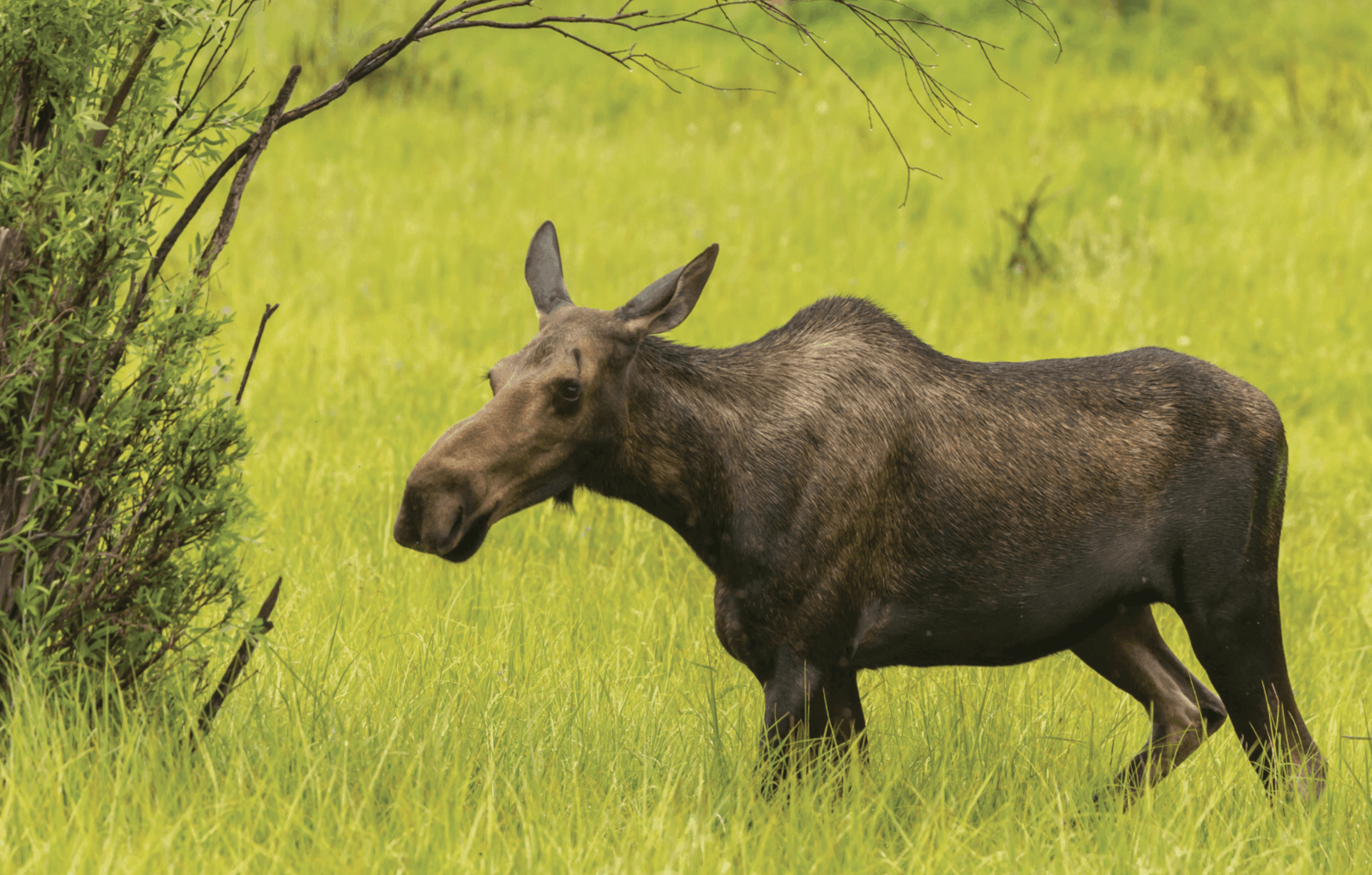
BREED: Moose
SPECIES: Alces alces
COLOR/PATTERN: Light to dark brown
HEIGHT: 4 to 7 feet
WEIGHT: 441 to 1,800 pounds
REGION OF ORIGIN: North America, Northern Europe, and Asia
Gangly, doleful, and occasionally massive, the moose has long held a place in imaginations across the globe, evoking shadowy northern forests and lonesome swamps. As one crosses borders into places like Maine and British Columbia, unnerving yellow road signs appear featuring the silhouetted ungulate facing down a car with a buckled hood. (Caution advised; fear implied.) But across the pond, these awkward behemoths have a different reputation—as gentle providers of milk, meat, and sheer delight.
Moose milk has provided nourishment for centuries in Scandinavia and Russia, where the animals are called “elk.” (No relation to the similarly sized animal in the deer family.) The Älgens Hus (Elk House) in Bjurholm, Sweden keeps a herd of semi-domesticated moose, including three milk-producing sisters whose milk is turned into four rotating varieties of cheese. The cheeses are only available at Älgens Hus’ on-site restaurant and a few neighboring shops and eateries, but the tangy, high-protein delicacy is worth the trip and the price tag. At nearly $500 per pound, moose’s milk cheese clocks in as the second most expensive cheese in the world, following closely behind the donkey’s milk cheese Pule (a whopping $600 to $1000 per pound).
Moose lactate for a five-month window every summer, producing only about five liters of butterfat-rich milk per day. It takes a calm and steady hand to milk a moose: A disturbed moose needs roughly two hours to settle down from an upset before her milk can flow once more. In addition to cheesemaking, the mineral-dense milk is used across northern latitudes to treat gastroenteritis and other chronic illnesses.



